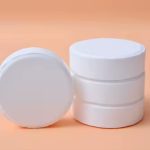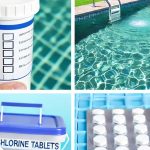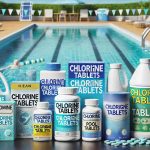Liquid chlorine and chlorine tablets are commonly used disinfectants, but they differ significantly in terms of form, mode of action, and application methods. The choice between liquid chlorine and chlorine tablets in water treatment and microbiological control often depends on specific needs and usage scenarios. Before delving into the differences between liquid chlorine and chlorine tablets, it’s essential to explore their individual characteristics and their impact on water quality.
Liquid chlorine typically refers to liquid compounds containing chlorine, such as sodium hypochlorite solution or chlorine solution. These compounds release chlorine ions in water, achieving a disinfectant effect. Chlorine tablets, on the other hand, are solid tablets primarily composed of chlorine-containing compounds, such as trichloroisocyanuric acid. Chlorine tablets dissolve in water, releasing chlorine slowly and providing a sustained and prolonged disinfection effect.
Analyzing the Release Efficiency
Liquid chlorine is characterized by its rapid spread, evenly distributing throughout the water quickly once added to a pool. This makes liquid chlorine suitable for spring openings and addressing substantial algae problems. For example, during the beginning of the swimming pool season, where bacteria and microorganisms may proliferate due to prolonged inactivity, adding liquid chlorine rapidly and efficiently achieves thorough disinfection, ensuring the pool’s water quality meets standards.
In contrast, chlorine tablets have a lower chlorine release rate, making them more suitable for routine maintenance of swimming pools. As chlorine tablets dissolve, chlorine is released into the water at a slower pace, providing a persistent and mild bactericidal effect. Consider a scenario where the pool water quality is relatively stable, but continuous maintenance of chlorine levels is necessary to prevent microbial growth. In such cases, choosing chlorine tablets, which slowly release chlorine through a chlorinator, helps maintain stable water quality, preventing sharp fluctuations in chlorine concentration.
Applicability of Liquid Chlorine and Chlorine Tablets
- Algae Bloom and Routine Maintenance: For rapid and robust disinfection in the presence of a significant algae bloom, liquid chlorine is suitable. Its rapid spread effectively suppresses algae in a short period, expediting water purification. For routine algae prevention and long-term maintenance, chlorine tablets are more appropriate. Over time, they continually release chlorine, inhibiting algae growth and maintaining water cleanliness.
- Peak Periods in Swimming Pools: During peak periods or routine maintenance of swimming pools, quick adjustments to water quality may be necessary. Liquid chlorine is an excellent choice as it rapidly disperses in water, quickly adapting to changes in pool water. For pools requiring long-term stability, especially during off-peak periods, using chlorine tablets is a more economical and durable approach. Through slow release, they help maintain water quality stability.
- Large-Scale Water Treatment Plants: Liquid chlorine, with its rapid spreading characteristics, is effective for treating large volumes of water in water treatment plants, ensuring rapid compliance with water quality standards. In the daily operation of water treatment plants, periodic addition of chlorine tablets can be considered to maintain stable chlorine ion concentrations in the water.
In conclusion, liquid chlorine and chlorine tablets each have their merits in water treatment. The specific choice depends on needs and system requirements. In large water treatment plants, such as those in significant facilities, liquid chlorine may be more convenient and economical. However, in small bodies of water and swimming pools, chlorine tablets offer convenience and flexibility. Regardless of the chlorine disinfectant chosen, it should be used in conjunction with specific conditions and applied scientifically and reasonably to ensure the safety and cleanliness of water quality.




